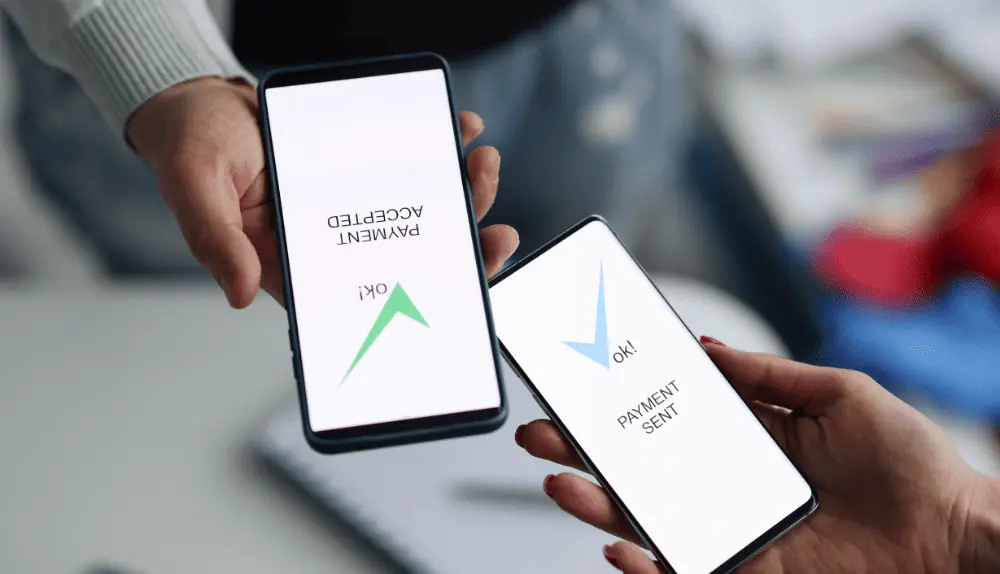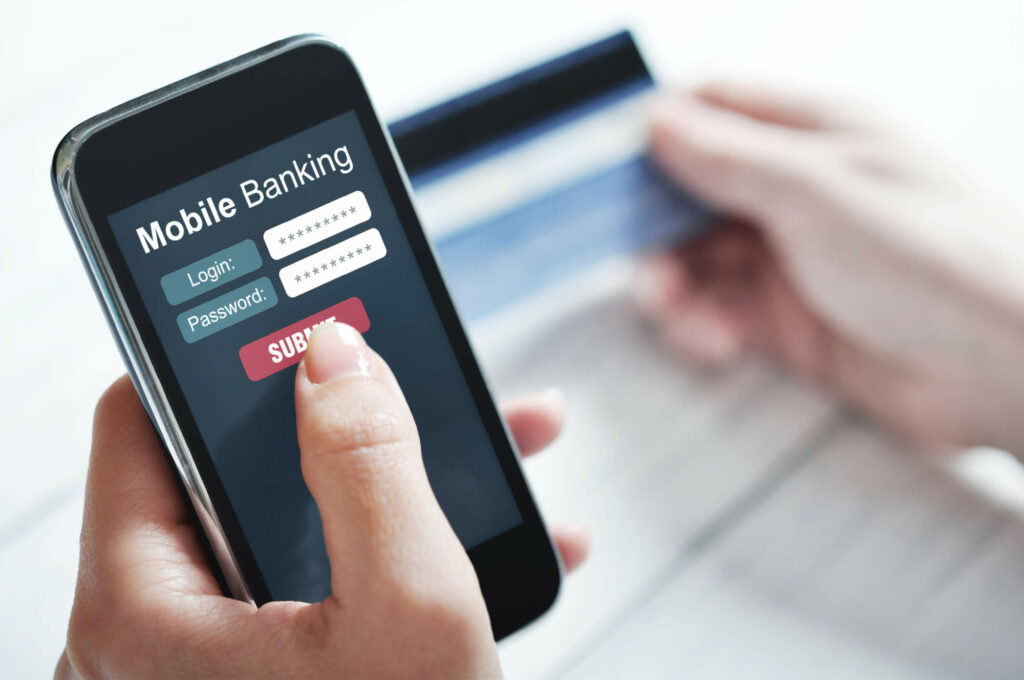In the ever-evolving world of technology, a new generation of consumers has emerged, wielding their smartphones as powerful tools for every aspect of their lives. Gen-Z, born and bred in the digital age, embraces the convenience and connectivity offered by their handheld devices. But it’s not just about social media or entertainment; these tech-savvy individuals are now taking their financial matters into their own hands, finding a sense of security and empowerment in banking via smartphones.
Join us as we delve into the fascinating realm where Gen-Z consumers feel more secure banking via smartphone. They feel confident, and in control, all at the swipe of a finger.
As traditional brick-and-mortar institutions struggle to keep up with the demands of this digitally native generation, Gen-Z consumers are rewriting the rules of financial engagement, favoring the ease, accessibility, and personalized experiences offered by mobile banking.
How do Smartphones help in Banking?

In today’s digital age, smartphones have become an integral part of our lives, seamlessly blending technology with everyday tasks. From communication and entertainment to shopping and social networking, these powerful devices have transformed the way we interact with the world around us. In an era where convenience and connectivity reign supreme, it’s no surprise that Gen-Z consumers have embraced smartphones as their preferred method of banking. With the ability to access their financial accounts, make transactions, and manage their money with just a few taps, Gen-Z consumers feel a heightened sense of security when conducting their banking activities via their smartphones. Let’s explore how smartphones have revolutionized the banking experience for this tech-savvy generation.
Accessibility and Convenience: Banking at Your Fingertips
Gone are the days of long queues and limited banking hours. Smartphones have revolutionized the way we manage our finances by offering unprecedented accessibility and convenience. With just a few taps on their screens, Gen-Z consumers can access their bank accounts anytime, anywhere. Whether they need to check their balance, transfer funds, pay bills, or even apply for loans, all the necessary financial tools are literally at their fingertips. This level of convenience aligns perfectly with the fast-paced, on-the-go lifestyle of Gen-Z, allowing them to take control of their finances without being tied to physical branches or time constraints.
Enhanced Security Measures: Trusting the Digital Vault
One might think that entrusting personal financial information to a smartphone would be a cause for concern, but Gen-Z consumers have proven that they value the security measures in place. Banks and financial institutions have implemented robust encryption protocols and multi-factor authentication methods to safeguard their customers’ sensitive data. Moreover, smartphone manufacturers and app developers continuously strive to enhance security features, including biometric authentication such as fingerprint or facial recognition, ensuring that only authorized users can access their financial accounts. The result is a newfound sense of trust and security among Gen-Z consumers, who feel confident that their personal and financial information is protected within the digital vault of their smartphones.
Personalized Experiences: Tailored Banking Services
Gen-Z consumers are accustomed to personalized experiences in every aspect of their lives, and banking is no exception. Smartphones offer a wealth of data and technological capabilities that enable banks to provide tailored services and recommendations based on individual preferences and spending patterns. From personalized budgeting tools to customized savings plans and investment advice, Gen-Z consumers can benefit from banking experiences that are specifically designed to meet their unique needs and goals. This level of personalization fosters a deeper sense of connection and engagement, making the smartphone not just a banking tool but a trusted financial companion.
Financial Education and Empowerment: Learning on the Go
Smartphones not only facilitate day-to-day banking activities but also serve as powerful educational tools. Gen-Z consumers have access to many financial literacy resources and apps that can help them develop essential money management skills. Whether it’s learning about budgeting, investing, or understanding complex financial concepts, the smartphone becomes a virtual classroom, providing bite-sized information and interactive learning experiences. This democratization of financial knowledge empowers Gen-Z consumers to make informed decisions, navigate the complexities of the financial world, and secure their financial future.
Overall, smartphones have emerged as indispensable allies for Gen-Z consumers in the realm of banking. The accessibility, convenience, enhanced security measures, personalized experiences, and educational opportunities offered by these devices have transformed the way this generation interacts with their finances. As the digital landscape continues to evolve, smartphones will undoubtedly remain a vital tool, empowering Gen-Z consumers to navigate the financial landscape with confidence, ease, and a sense of security.
How Do Financial Transactions on Smartphones Work?

Financial transactions on smartphones rely on a combination of secure protocols, encryption, and mobile banking applications. Here’s a simplified overview of how these transactions work:
Mobile Banking Applications
Banks provide dedicated mobile banking applications that can be downloaded and installed on smartphones. These applications act as a gateway for users to access their bank accounts and perform various financial transactions.
User Authentication
To ensure the security of financial transactions, user authentication is a crucial step. Mobile banking applications employ various authentication methods, such as username and password, PINs, biometric data (fingerprint or facial recognition), or two-factor authentication (2FA). These measures ensure that only authorized users can access their accounts and perform transactions.
Secure Connection
When a user opens a mobile banking application, it establishes a secure connection between the smartphone and the bank’s servers. This connection is typically encrypted using industry-standard protocols like Secure Sockets Layer (SSL) or Transport Layer Security (TLS). Encryption ensures that the data transmitted between the smartphone and the bank’s servers remains private and protected from unauthorized access.
Transaction Request
Users can initiate various types of transactions through the mobile banking application. These include checking account balances, transferring funds between accounts, paying bills, making mobile payments, depositing checks using the smartphone camera, and more. The user provides the necessary details and authorizes the transactions within the application.
Data Transmission and Processing
Once the user initiates a transaction, the mobile banking application securely sends the transaction details to the bank’s servers over the encrypted connection. The bank’s servers receive and process the transaction request, verifying the user’s account details, available funds, and transaction validity.
Confirmation and Notifications
After processing the transaction, the bank’s servers send a confirmation message back to the mobile banking application. The user receives real-time notifications or confirmation messages on their smartphone, providing updates on the transaction status, successful completion, or any errors encountered.
Security Measures
To ensure the security of financial transactions, banks implement additional security measures. These may include fraud detection systems, transaction monitoring, device recognition, and alerts for suspicious activities. Banks also encourage users to set up strong passwords, enable biometric authentication, and regularly update their mobile banking applications to stay protected against emerging threats.
It’s important to note that each bank may have its specific procedures and security measures in place, but the general framework outlined above demonstrates how financial transactions on smartphones typically work. With the combination of secure connections, encryption, and authentication methods, smartphones have become a trusted platform for users to conveniently and securely manage their financial transactions on the go.
Why Do Gen-Z Consumers Feel More Secure Banking via Smartphone?

Gen Z prefers using smartphone banking for several reasons:
Convenience
Gen Z grew up in a digital era where smartphones are an integral part of their daily lives. Using smartphones for banking allows them to access their accounts anytime, anywhere, without being tied to physical branches or limited banking hours. With a few taps on their screens, they can check their balances, transfer funds, pay bills, and perform other banking activities on the go. This level of convenience aligns perfectly with their fast-paced, always-connected lifestyle.
Accessibility
Smartphones offer unparalleled accessibility to banking services. Gen Z consumers often prioritize accessibility and inclusivity, and smartphones provide a gateway to financial services for those who may not have easy access to physical bank branches. With smartphone banking, individuals in remote areas or with mobility constraints can still manage their finances effectively, bridging the gap between them and traditional banking services.
Technological Advancements
Gen Z is the first generation to grow up in a smartphone-dominated world truly. They are comfortable with technology and appreciate the seamless integration of banking services into their digital devices. Banks and financial institutions have responded to this demand by developing intuitive mobile banking applications with user-friendly interfaces and features that cater to Gen Z’s tech-savvy nature.
Enhanced Security Measures
While security concerns may arise when conducting financial transactions via smartphones, banks, and mobile app developers have invested heavily in implementing robust security measures. Advanced encryption protocols, multi-factor authentication methods, and biometric recognition (such as fingerprint or facial recognition) provide Gen Z consumers with a sense of security and trust in using their smartphones for banking. They recognize that their personal and financial information is safeguarded within the digital vault of their devices.
Personalization and Customization
Gen Z consumers value personalized experiences, and smartphone banking delivers just that. Mobile banking apps can offer tailored recommendations, budgeting tools, and customized savings plans based on individual preferences and spending patterns. This level of personalization fosters a deeper sense of engagement and connection, making the smartphone not just a banking tool but a trusted financial companion.
Financial Education and Empowerment
Smartphones also serve as powerful educational tools, providing Gen Z consumers with access to a wealth of financial literacy resources and apps. They can learn about budgeting, investing, and other financial concepts, empowering them to make informed decisions about their finances. With the educational opportunities available on smartphones, Gen Z feels more equipped to navigate the complexities of the financial world and secure their financial future.
Overall, Gen Z prefers using smartphone banking due to the convenience, accessibility, technological advancements, enhanced security measures, personalization, and educational opportunities it offers. With smartphones as their trusted financial tools, Gen Z consumers can confidently manage their finances, stay connected to their accounts, and maintain control over their financial well-being.
Is Smartphone Banking Secure?
Smartphone banking can be secure when proper security measures are in place. Banks and financial institutions have invested heavily in ensuring the security of mobile banking applications and the underlying infrastructure. Here are some key security measures employed to protect smartphone banking:
Encryption
Mobile banking apps use strong encryption protocols, such as SSL or TLS, to encrypt the communication between the smartphone and the bank’s servers. This ensures that the data transmitted, including login credentials and transaction details, is encrypted and protected from unauthorized access.
Secure Authentication
To access mobile banking apps, users are required to authenticate themselves using secure methods. This can include passwords, PINs, biometric authentication (fingerprint or facial recognition), or two-factor authentication (2FA). These measures help ensure that only authorized users can access their accounts.
Device Recognition
Mobile banking apps often employ device recognition techniques to verify the authenticity of the smartphone being used. This helps detect and prevent unauthorized access from unfamiliar devices, adding an extra layer of security.
Multi-Factor Authentication (MFA)
Many mobile banking apps utilize MFA, requiring users to provide multiple pieces of information to verify their identity. This can include a combination of something the user knows (password or PIN), something the user has (smartphone or token), or something the user is (biometric data). MFA significantly enhances security by making it more difficult for unauthorized individuals to gain access to user accounts.
Fraud Detection and Monitoring
Banks employ sophisticated fraud detection systems and transaction monitoring algorithms to identify and prevent fraudulent activities. These systems can detect unusual patterns, suspicious transactions, or unauthorized access, triggering alerts or blocking such activities.
Regular Updates and Security Patches
Banks and mobile app developers regularly release updates and security patches for their mobile banking applications. These updates address any identified vulnerabilities, enhance security features, and ensure that the app remains resilient against emerging threats. It is crucial for users to keep their mobile banking apps updated to benefit from the latest security enhancements.
While these security measures are in place, it’s important for users to also take responsibility for their own security. This includes using strong, unique passwords, not sharing login credentials, regularly reviewing account activity, being cautious of phishing attempts, and ensuring that their smartphone’s operating system and security software are up to date.
Overall, with proper security measures, strong encryption, secure authentication, and user vigilance, smartphone banking can be a secure method for managing financial transactions. However, users should always remain cautious and take necessary precautions to protect their personal and financial information.
Benefits of Smartphone Banking
Smartphone banking offers numerous benefits for users. Here are some key advantages of using smartphone banking:
Convenience
Smartphone banking provides unparalleled convenience by allowing users to access their accounts and perform various financial transactions anytime, anywhere. Whether it’s checking account balances, transferring funds, paying bills, or depositing checks, users can conveniently manage their finances with just a few taps on their smartphones. This eliminates the need to visit physical bank branches or adhere to limited banking hours, saving time and effort.
Accessibility
Smartphone banking extends financial services to a wider audience, including those who may have limited access to physical bank branches. It enables individuals in remote areas or with mobility constraints to have easy and convenient access to their accounts and banking services. Smartphone banking bridges the gap between users and traditional banking services, promoting financial inclusion.
Real-Time Account Monitoring
With smartphone banking, users can monitor their account activities in real time. They can receive instant notifications about transactions, account balances, and other important updates, providing a clear overview of their financial status. This enables users to stay informed, detect any unauthorized activity promptly, and take immediate action if needed.
Enhanced Security
Banks and financial institutions implement robust security measures in mobile banking apps to protect users’ personal and financial information. These measures include encryption protocols, secure authentication methods (such as biometrics or two-factor authentication), and fraud detection systems. Users can have confidence that their sensitive data is safeguarded within the secure environment of their smartphones.
Personalized Financial Management
Smartphone banking apps often provide personalized features and tools that empower users to manage their finances effectively. Users can set up budgeting tools, track expenses, set savings goals, and receive personalized recommendations based on their financial behavior and goals. This level of personalization enhances financial awareness, promotes responsible financial habits, and helps users achieve their financial objectives.
Speed and Efficiency
Smartphone banking enables swift and efficient financial transactions. Users can quickly transfer funds between accounts, make payments, or complete other transactions with just a few taps. This reduces the time and effort spent on traditional banking methods, such as writing checks or visiting physical branches. It also streamlines processes and reduces the likelihood of errors or delays associated with manual transactions.
Financial Education
Many smartphone banking apps offer educational resources and tools to improve users’ financial literacy. Users can access articles, videos, tutorials, and interactive tools that promote financial understanding and provide guidance on topics like budgeting, saving, and investing. This fosters financial empowerment, enabling users to make informed decisions and improve their overall financial well-being.
Environmentally Friendly
Smartphone banking reduces the need for paper-based transactions and documentation, contributing to a more sustainable and eco-friendly banking experience. By opting for electronic statements, digital payments, and mobile check deposits, users can minimize their carbon footprint and support environmental conservation efforts.
In summary, smartphone banking offers convenience, accessibility, real-time monitoring, enhanced security, personalized financial management, speed, efficiency, financial education, and environmental benefits. It empowers users to take control of their finances, simplifies banking processes, and enhances the overall banking experience.
Final Words
In conclusion, smartphone banking has revolutionized the way we interact with our finances, catering to the needs and preferences of the tech-savvy generation. With its convenience, accessibility, enhanced security measures, personalized features, and educational opportunities, smartphone banking offers many benefits. It empowers users to manage their accounts conveniently, perform transactions on the go, and stay connected to their financial activities in real-time.
As technology continues to advance, we can expect further innovations and improvements in smartphone banking, promising an even more seamless and personalized banking experience. With smartphones as their trusted financial tools, users can confidently navigate the ever-evolving financial landscape, gaining greater control, efficiency, and empowerment over their financial well-being.
Frequently Asked Questions (FAQs)
Is smartphone banking safe and secure?
Yes, smartphone banking can be safe and secure when proper security measures are in place. Banks employ encryption protocols, secure authentication methods, and fraud detection systems to protect users' personal and financial information. It is important for users to also take precautions, such as using strong passwords, keeping their mobile banking app updated, and avoiding sharing sensitive information.
Can I access all banking services through smartphone banking?
Mobile banking apps offer a wide range of banking services, including checking account balances, transferring funds, paying bills, depositing checks, and even applying for loans. However, the availability of specific services may vary depending on the bank and its mobile banking app.
Can I use smartphone banking on multiple devices?
Yes, mobile banking apps can typically be installed and used on multiple devices, such as smartphones and tablets. However, users should ensure they log out properly and follow security best practices when accessing their accounts from different devices.
Are there any fees associated with smartphone banking?
Most banks offer mobile banking services to their customers free of charge. However, it's important to review the terms and conditions of your specific bank to understand any potential fees that may apply to certain transactions or services.
What happens if I lose my smartphone or it gets stolen?
If your smartphone is lost or stolen, it's important to contact your bank immediately to report the situation and have your mobile banking access disabled. Banks have procedures in place to protect your accounts and can help you regain access or secure your funds.
Can I use smartphone banking while traveling internationally?
In most cases, you can use smartphone banking while traveling internationally. However, it's advisable to inform your bank of your travel plans in advance to avoid any disruptions or potential issues with accessing your accounts abroad.

